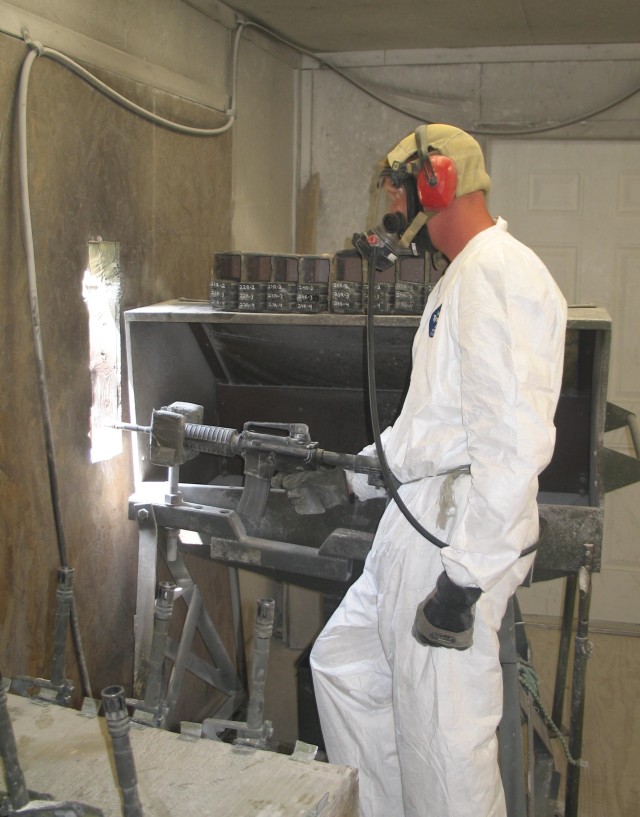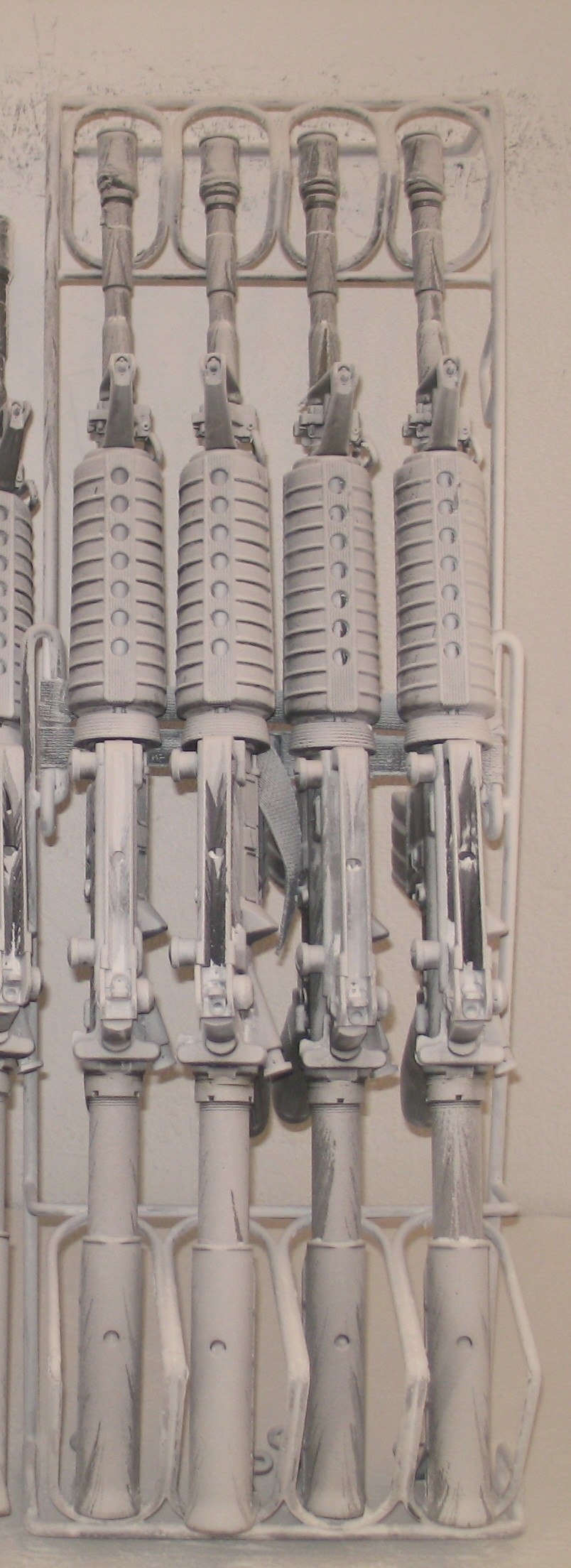WASHINGTON (Army News Service, Dec. 18, 2007) - In a test conducted last month under extreme conditions, the M-4 carbine had just over 1 of every 100 rounds jam in the weapon or magazine. A recent survey, though, indicated that an overwhelming majority of Soldiers who have used the M-4 in combat have high confidence in the weapon.
At a Pentagon media roundtable Dec. 17, the Army addressed the results of the M-4 carbine Extreme Dust Test III conducted in November. The test had been scrutinized by Senator Tom Coburn of Oklahoma after the M-4 finished last of four weapons in the technical testing.
The M4 was put through technical rigors along with the XM-8 lightweight assault rifle, the MK-16 combat assault rifle and the HK-416 carbine in a series of extreme technological performance tests designed to push the four weapons systems to failure and to identify their boundaries.
The four weapons were first subjected to 25 hours of constant, heavy dusting in laboratory conditions at Aberdeen Proving Ground, Md., "in an environment not commonly found, if ever, in an operational environment" said Brig. Gen. Mark Brown, commander of Program Executive Office Soldier and the Natick Soldier Systems Center, who stressed the test was not an operational examination. "Extreme dust test does not replicate any typical Soldier use or operational condition."
The general stressed the test did not address reliability in any typical operational condition, nor did it test weapons part service life or life-cycle maintenance costs or any other aspect of weapons effectiveness, such as suitability, survivability or other reliability and performance other than technical reports in extreme dust conditions.
After being exposed to the heavy dusting, 10 of each weapon fired 6,000 rounds apiece. They were fired in 50 120-round cycles. Each was then wiped and re-lubricated at the 600 round mark. After 1,200 rounds were fired from each weapon, they were fully cleaned and re-lubricated - far less often than would have occurred in the operational field where Soldiers typically clean and lube their weapons after each mission, even if their weapons have not been fired.
"While the M-4 finished fourth out of four, 98 percent of all the rounds fired from it went off down range as they were supposed to do," Brig. Gen. Brown said. "However, the three other candidates did perform better at about a 99 percent rate or better, which is a mathematically statistically significant difference, but not an operationally statistical difference."
Even with extreme dust test III's 98.6 percent success rate there was a total of 863 class 1 and 2 weapon/magazine stoppages with 19 class 3 stoppages. During extreme dust test II conducted during the summer, there were 296 total class 1 and 2 stoppages and 11 class 3 stoppages. A class 1 stoppage is one a Soldier can clear within 10 seconds; a class 2 stoppage is one a Soldier can clear, but requires more than 10 seconds; and, class 3 is a stoppage that requires an armorer to clear.
"One of the concerns we had about the test and what drove us to this news conference is that the test was still under analysis when we started getting external questions about it," Brig. Gen. Brown said. "At this stage of analysis of the test results, this is very early preliminary feedback. We don't know what caused the differences in performance between dust test II and dust test III.
"The tests were undertaken at different times of the year; they were taken under different humidity conditions - it's not a humidity controlled chamber; the tests were undertaken by different crews, so we're in the process of evaluating why the big disparity between the tests," he said. "Still, we're talking about a 98-percent performance rate with no stoppages. The M-4 carbine is a world-class weapon, and the Soldier feedback on that weapon since the war began is that they have a high confidence level in the M-4."
The Army has put an option on an existing contract for 64,450 M4s, according to the general.
In a recent survey conducted by the Center of Naval Analysis, 917 Soldiers who have used the M-4 carbine in combat reported an 89-percent overall satisfaction in the weapon. A total of 734 or 80 percent reported confidence that the M4 will fire without malfunction in combat; and 81 percent did not experience a stoppage while engaging the enemy. Three percent who experienced a stoppage reported an inability to engage the enemy during a significant portion or the entire firefight after performing immediate or remedial action to clear the stoppage, while only 1 percent, or 12 Soldiers felt the M-4 should be replaced.




Social Sharing